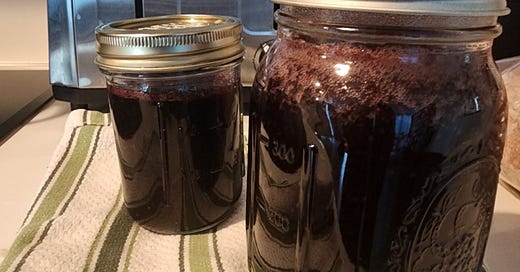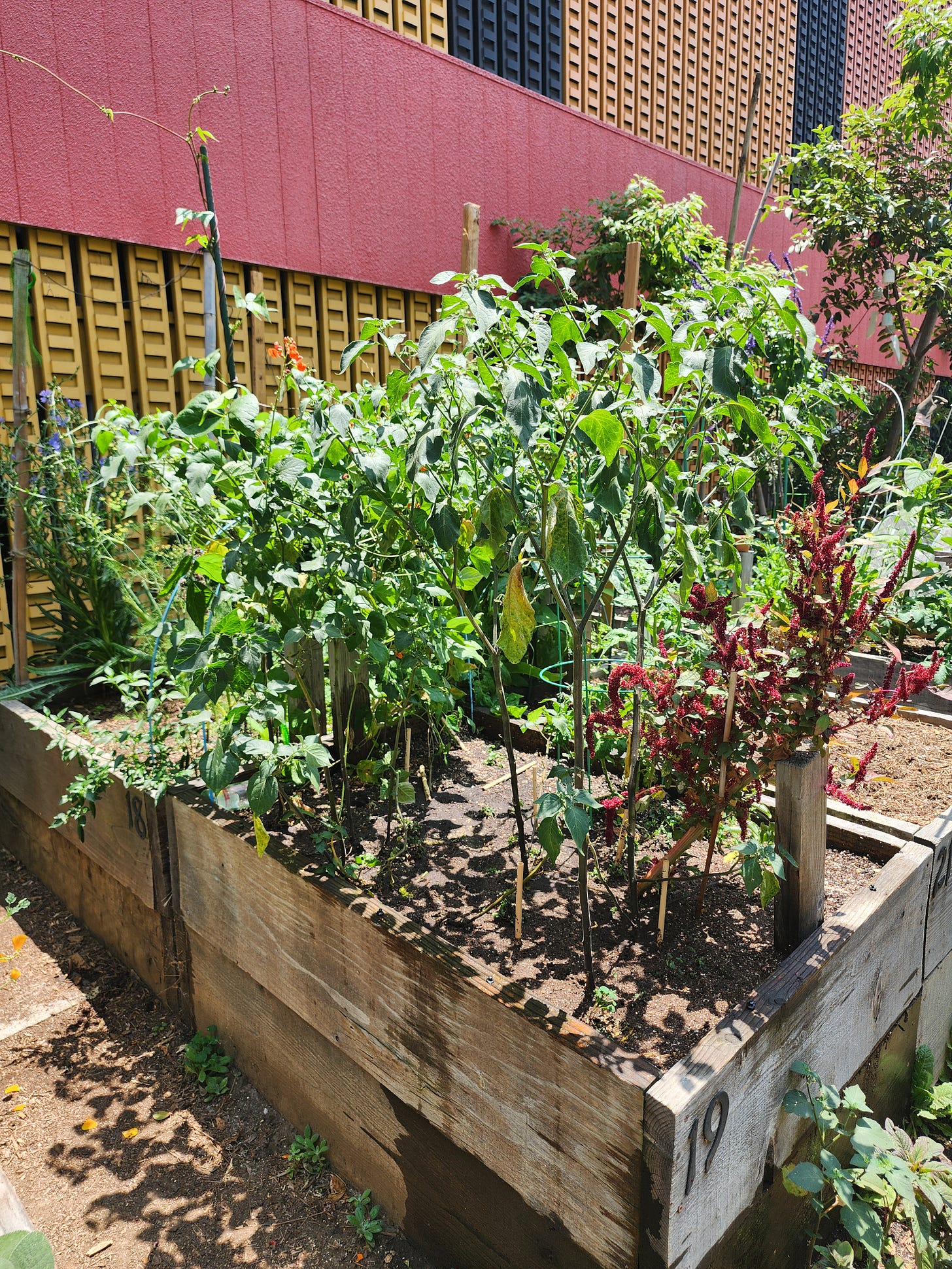Making "Deadly" Blackity-Blue Jams
As part of Living Liberatory Joy, I have been growing foods and medicines in my local community garden. To address the overabundance of the harvest, I have been learning techniques of food preservation. My goto technique has been dehydration, which I can do in my oven. My latest technique is canning which I practiced for the first time today.
My food canning goal was making a jam from the black nightshade growing in my community garden plot. I did not originally plant black nightshade in my garden, but it decided to grow there and who am I to challenge nature.
Black nightshade is the less toxic cousin of belladonna. The green berries and uncooked young leaves are toxic, but the black ripe berries, which I used, are not.
I did not want a full batch of black nightshade so I cooked it with blueberries and a hot pepper from one of my community garden neighbors. The recipe called for fresh lemon juice, pectin, and a lot of sugar.
As it took a couple of weeks to get a full harvest, I kept the pepper and black nightshade in a sealed jar with water until today. So there may have been slight fermentation, which is said to be good for the nightshade.
I am happy to have done the canning correctly with the guidance of Ms. Ethel, the elder Black woman at the farmers market from whom we buy jams. She instructed me to keep everything boiling “hot hot” and to use Bell brand jars and tops, which I had purchased at the grocery store.
I heated the jars at a rolling boil for 10-15 minutes, added the boiling jam, sealed the jar, placed it in boiling water for another 10-15 minutes, placed it to cool, anf listened for the “pop” that says it is sealed. A bright smile was stuck on my face when I heard the pop.
The taste of the jam is a little unusual due to the black nightshade and the peppers, but it is a medicinal jam.
I am proud of learning how to can food. It is one of the skills needed to survive as food supplies dwindle due to the ICE raids on the Latine communities, which are terrorizing them from the fields and the seller's stalls at the markets.





